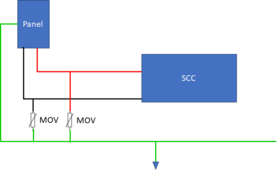Ahh, that’s what it,was.View attachment 206197
I recommend routing the PV EGC directly to the main breaker box where the Grounding Electrode Conductor ties in. It would be better to route it directly to the grounding electrode, but I don't know if inspectors would allow it.
What about,adding an SPD? Then you can ground to the inverter.
Both of the above examples makes sense to me. But I also get not wanting to ground EGC from array to inverter. In other words I’m confused again, lol.
I was planning,to run each ECG seperately to one ground bus bar, and then to the 2 ground rods 8 feet apart




